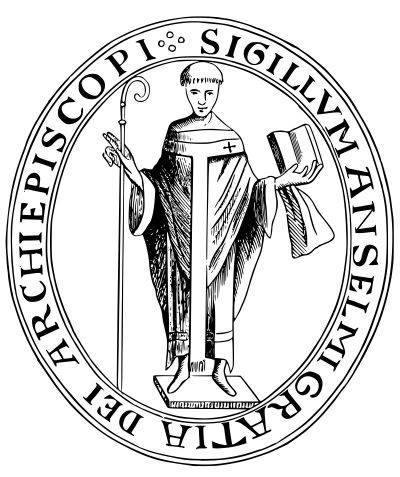For a time, Anselm, the unremarkable monk from Aosta, held power. The power of intellect, the power of influence, the power of persuasion, the power of example, the power of an extraordinary personality, but chiefly the power of high office. Aspects of his life and career were sober, even solemn but other aspects were quite lamentably farcical and often arose from difficulties of his own making. When, at the age of sixty, he left the Benedictine monastery at Bec and accepted a post for which he was totally unsuited, was he inspired or foolish?
The historian RW Southern, his biographer, claims that Anselm had no understanding of politics, or even how to conduct business, even though he administered the Abbey of Bec for fifteen years. Yet in 1093 he allowed himself to be coerced, persuaded or bullied – or all three – into accepting a position for which he had no real training, talent or even inclination. It meant that he was forced into the politics of a volatile decade in Europe unprepared for what he would face. He was not an administrator, claims R W Southern, he had no head for ‘business’. Yet he had to move in the highest circles, rub shoulders with kings, princes, popes and cardinals and negotiate in delicate disputes among the nobility and clergy. He was a theologian, a writer, a thinker. Suddenly he had to enter a difficult and dangerous whirl of contending forces – the world of secular and clerical politics.
In Deaths, Disasters and Destinies (Chapter Twelve "The Connecting Life"), the life of Anselm touches all the other figures whose stories are told in the book. Anselm holds a rightful place at the centre of the narrative because he was probably one of the most significant figures in the Anglo-Norman politics of his day.
Who was Anselm?
Anselm always claimed that he did not seek and did not want high office, but it was thrust upon him nevertheless. So what is there about the known facts of his life that supports that claim?
It is known that he came from Aosta in the Italian mountains but technically part of Burgundy, and was born in 1033 or 1034 into a family of declining gentility. Not a great deal is known about his early life but he seems to have fallen out with his father before quitting his home town for good. We know he had a sister and a nephew also called Anselm who later, much later, became Bishop of Bury St Edmunds. He told one or two stories about his past life to Eadmer, who recorded them for us, but on the whole he does not seem to be bringing a great deal of youthful baggage to his later life.
Anselm became a monk at Bec sometime around 1059, so he would have been about 26 years old. At that time Bec was an institution strongly appealing to young monks in search of a dutiful life of instruction, teaching and writing. They were attracted by Lanfranc, the Prior, a scholar and leader of distinction who was later invited by William the Conqueror to become Archbishop of Canterbury.
In international affairs the only men of mark during Anselm’s youth and middle age, men who faced the world with bold plans for the future and could command widespread support, were William of Normandy and Pope Gregory VII. Anselm knew them both. These two men largely forged the world in which Anselm would be called on to play his part.

Anselm was a theologian whose works were admired in his day. He wrote about the nature of the divine being, the justification for the incarnation, the meaning of the eucharist and the ‘real presence.’ Most of his writing dates from late in his life and his work owes much to St Augustine although he lacks the breadth of classical sources. Despite his great repute he was not canonised by the Catholic Church until 1494.
Today all this is of lesser interest to us. Thanks to the remarkable biography of Eadmer, we can look into Anselm’s life and try to reach the personality of this brilliant, inept, principled, infuriating cleric who had his moment in the flaring beam of greatness.
Yet he only held three major posts in all his life. In 1063 he was elected Prior of Bec. In 1078 he was elected Abbot. In 1093 he was appointed by William II of England as the new Archbishop of Canterbury.
The extraordinary events surrounding this appointment are given dramatic treatment in The Remarkable Tale of the Bull and The Sheep, Chapter One "The King at Kingsholm". In this novel you will discover something of the weakness of human failings and the comedy of ineptitude that can happen even at the most daunting and serious moments of crisis. You can find out just what took place at Gloucester Castle in 1093 and why it set the scene for a decade of turbulence between the king and the church in England.